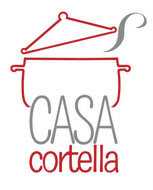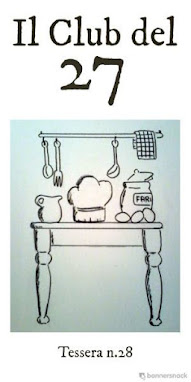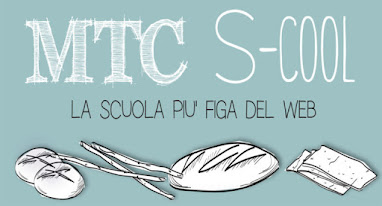Royal Bengal Tiger Tea - Cognac Indian Tea - Té indiano al cognac
la ricetta in italiano qui
Today let's have a little talk about tea, a drink that has become almost an obsession around the world. Besides being refreshing, tea plays an emotionally deeper role, and at different times of the day can turn into energizing, soothing, and also as comfortable retreat if necessary.
I remember a very nice book, Old Wives' Lore for Gardeners, where one of the two protagonists (sisters), an old lady from the English countryside, said that every problem got on crumbling or at least assumed a weak face in front of a nice cup of steaming tea.
At the end of the eighteenth century, when it was discovered that Indian climate was suitable for tea cultivation, no one imagined that there was even a native variety, named Camellia Assamica. Indeed, in the previous century explorers had reported the presence of a plant that was used alternately in the same way as salad and as infusion.
The commercial production of tea did not develop until the mid-nineteenth century when the first plantations were planted in the area of Assam and the Assam Tea Company was born. Since then, the tea cultivation has spread to other parts of India and today, with 13,000 gardens, India is the largest producer of tea in the world (about 7.5 million tons per year). Except for China, in fact, India is one of the countries that consume and produce more tea than other countries in the world. Great attention is paid to the protection of the most valuable qualities: Darjeeling and Assam, which are controlled and certified by the Tea Board of India which ensures compliance with the quality standards that they should have. Each tea from these regions is signed by a quality mark. Green tea and organic Oolong are also produced in Darjeeling.
The main production areas are located in the north east of India, on the slopes of the Himalayan mountains, east in the Assam valley and south around the Nilgiris mountains.Then some smaller states such as Dooars, a small province located west Assam or Terai, located south of Darjeeling and Nilgiri, located south west which gives tea similar to those of Ceylon.
India has become the largest producer and fourth largest exporter of tea in the world. Its greatest teas are divided into Darjeeling, Assam, Nilgiri, Dooars, Terai and Travancore.
This tea is one of the reliefs of the Empire and was created by British colonial officers in Darjeeling.
This region is known worldwide for its black tea, so unique and valuable to be known as the Champagne of teas, and the Darjeeling Himalayan Railway, a Unesco World Heritage Site. The tea plantations date back to the mid-nineteenth century and are a legacy of the British. The Himalayan Railway, which connects the city with the valley and the plains is one of the last steam railway service in India.
A funny story about: the guard in the minute narrow gauge train, which has been running the route from the plateau of North Bengal into the lower heights of Himalayas since 1881, remebered the Sahibs who eked out the tea served in the salon coupé with cognac to taste. The higher the train built in Scotland climbed, the more cognac flowed into the tea. The fact that the outer rail of the train was laid higher than the inner one so that in the event of a derailment it would fall towards the mountain on a bend, did not seem to be of much comfort. The percentage of cognac in the tea increased at the same rate as the train climbed until they reached Darjeeling, the summer residence of the British Colonial Headquearters of Bengal.
This region is known worldwide for its black tea, so unique and valuable to be known as the Champagne of teas, and the Darjeeling Himalayan Railway, a Unesco World Heritage Site. The tea plantations date back to the mid-nineteenth century and are a legacy of the British. The Himalayan Railway, which connects the city with the valley and the plains is one of the last steam railway service in India.
A funny story about: the guard in the minute narrow gauge train, which has been running the route from the plateau of North Bengal into the lower heights of Himalayas since 1881, remebered the Sahibs who eked out the tea served in the salon coupé with cognac to taste. The higher the train built in Scotland climbed, the more cognac flowed into the tea. The fact that the outer rail of the train was laid higher than the inner one so that in the event of a derailment it would fall towards the mountain on a bend, did not seem to be of much comfort. The percentage of cognac in the tea increased at the same rate as the train climbed until they reached Darjeeling, the summer residence of the British Colonial Headquearters of Bengal.
You need:
1 teaspoon lemon juice
1 teaspoon sugar syrup
3 tablespoons cognac
ice cubes
black strong tea, Darjeeling or Assam
a slice of lemon to garnish
1 teaspoon sugar syrup
3 tablespoons cognac
ice cubes
black strong tea, Darjeeling or Assam
a slice of lemon to garnish
Stir lemon juice, sugar syrup and cognac in a mixing glass. Pour the
mixture into a large tumbler filled half full with ice and top up with
ice cold tea. Garnish with a slice of lemon and serve with a straw in
the afternoon or evening.
That was a funny coincidence: Sanhita of Pocket full of Spices told me this is the drink they usually have at home, but warm version, without ice cubes and using hot tea. Let's give a try!
Still 15 days to spend in India: I'll be collecting Indian recipes till Nov. 16th midnight, Rome time for the World ABC Culinary Tour, info and rules here.













2 commenti:
OMG, we drink this all the time in my family, except the ice cubes though! We love the warm version though. A small tidbit, I come from the state of Darjeeling!
Sanhita, what a funny coincidence, I'm pretty honored :-)
Well, I will add warm version too, thank you ;-)
Posta un commento
grazie della visita e gentilmente firma sempre i tuoi commenti!
thanks for passing by and please sign up your comments!